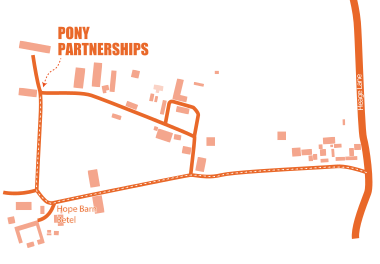Tranference and Projection in Equine Therapy
Posted 11 Oct 2017
The terms transference and projection are constructs employed by the psychodynamic tradition of psychology to describe a particular aspect of the therapeutic relationship (Cobb, 2015). Transference and countertransference are phenomena related to projection that occur naturally for every client and every therapist (Rothschild, 1993). It is important to note that transference and projection are neither good nor bad; like all feelings, they just are. Transference not only occurs in therapy, but in all of our relationships. In therapy it has the advantage that we can utilize it for growth (Rothschild, 1993).
Transference has been defined as ‘the client’s experience of the therapist that is shaped by his or her own psychological structures and past’, often involving ‘displacement onto the therapist, of feelings, attitudes and behaviours belonging rightfully to earlier significant relationships’ (Gelso & Hayes, 1998, p.11).
The use of projection can be defined as attributing our thoughts, feelings, behaviours, and experiences onto another person, animal, or object (Gergely, 2012).
Working with horses in EFP offers a variety of opportunities for projection and transference (Klontz et al., 2007). The assessment phase of the LEAP model of EFP allows significant opportunity to assess client reactions to common horse behaviours such as walking away, ignoring, being distracted by other horses, sleeping, wanting to eat, biting, urinating, and neighing can lead to a response from the client. In processing assessment activities such as Meet the Herd and Equine Reflection, the way a client interprets the movements, behaviours, and reactions of the herd, and particular horses is meaningful. The therapist might ask a client “What might the horse be thinking?” or “How might you feel if you were the horse right now?” (Gergely, 2012). Other examples might be noticing where client might become frustrated with the horse, becoming defensive or noticing extreme emotional reactions from a client, or a horse (Gergely, 2012). Sometimes it can be difficult to articulate complex thoughts and feelings about ourselves and others. Using more embodied methods such as those within EFP can help clients access awareness that has not previously been accessible to them (Inskipp and Proctor, 1995).Determining the meaning of these metaphors and addressing transference and projection reactions in the here-and-now of therapy can allow exploration of these issues.
Klontz et al. (2007) highlight the accurate and unbiased feedback given by horses when they react to the physical and emotional states of the participant during assessment exercises. These reactions can provide clients with an opportunity to raise their awareness and to practice congruence between their feelings and behaviours (Zugich, Klontz, and Leinart, 2002). Klontz et al. (2007) also point out that, whilst transference reactions to the therapist can be easily dismissed due to perceived shortcomings or mistakes, it is more difficult to attribute a transference reaction to the “…shortcomings, inappropriate behaviours, or premeditated offenses of a horse” (Klontz et al., 2007, p.259). This may mean that transference reactions in equine therapy can be addressed without some of the confounding interpersonal factors present in more traditional therapies (Klontz et al., 2007).
The information gathering through potential transference and projection during assessment may be taken note of to pick up in later sessions. It is also important to note that this assessment will be ongoing, and not just situated in the first session(s). It will be important for the therapist to make sufficient notes and reflect on the sessions in supervision in order to identify potential clues for future sessions, as well as what the client is ready to reflect on and what may be saved for further on in the therapeutic process.
Cobb, S.M. (2015) What passes between client and therapist? The Psychologist, 28(7), pp: 600-602.
Rothschild, B. (1993) Transference & Countertransference: A Common Sense Perspective. Kathi’s Mental Health Review [Online]. Available at: http://www.toddlertime.com/mh/terms/countertransference-transference-2.htm. (Accessed 29 June 2017)
Gelso, C.J. & Hayes, J.A. (1998). The psychotherapy relationship. New York: Wiley.
Gergely, E.J. (2012) Equine-Assisted Psychotherapy: A Descriptive Study. (Doctoral Dissertation). Available at:http://scholarworks.wmich.edu/cgi/viewcontent.cgi?article=1111&context=dissertations. (Accessed 29 June 2017).
Klontz, B.T., Bivens, A., Leinart, D., and Klontz, T. (2007) The Effectiveness of Equine-Assisted Experiential Therapy: Results of an Open Clinical Trial. Society and Animals, 15(2007), pp.257-267
Inskipp, F., and Proctor, B. (1995) The art, craft and tasks of counselling supervision. Part 2: Becoming a supervisor(2nd edn). Cascade: Twickenham.
Zugich, M., Klontz, T., & Leinart, D. (2002). The miracle of equine therapy. Counselor Magazine, 3(6), p.22-27.



















